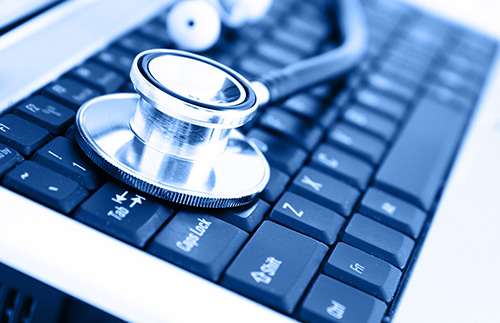In today’s globalized world, healthcare systems are increasingly serving diverse populations that speak a variety of languages. From bustling urban hospitals to rural clinics, language barriers are a growing challenge—one that can mean the difference between life and death. In this high-stakes environment, medical translation services play a crucial role in bridging linguistic gaps and ensuring accurate, timely, and effective communication between healthcare providers and patients.
This article delves into the critical importance of precision in medical translations, the risks of inaccuracies, and the ways professional services uphold the highest standards in healthcare communication.
The Role of Language in Healthcare
Effective communication is foundational to high-quality healthcare. Diagnoses, treatment plans, medication usage, informed consent, and follow-up care all depend on clear and accurate exchange of information. For patients with limited English proficiency (LEP), this communication must be facilitated through translated materials and, at times, interpreters.
Language accessibility is not just a courtesy—it’s a legal and ethical requirement in many countries. For instance, in the United States, Title VI of the Civil Rights Act mandates that healthcare institutions receiving federal funding provide language access to LEP individuals.
When language barriers arise, medical translation services become indispensable in helping patients understand their health conditions, medical procedures, and treatment options and enabling doctors to make informed decisions based on accurate patient information.
Why Precision Matters in Medical Translation
Medical terminology is a language unto itself. Complex, technical, and often nuanced, it leaves little room for error. A slight mistranslation of a diagnosis, dosage, or surgical procedure can have catastrophic consequences. Precision is not optional—it is absolutely vital.
1. Patient Safety
Incorrect translations can lead to:
- Misdiagnosis
- Inappropriate treatment
- Medication errors
- Surgical complications
- Legal liabilities
A simple example illustrates the stakes: mistranslating “once” (Spanish for “eleven”) as “once” (meaning “one time” in English) on a medication label could result in a patient taking 11 pills instead of one—a potentially lethal mistake.
2. Legal and Ethical Accountability
Healthcare providers are bound by ethical codes and legal standards to ensure patients fully understand their medical conditions and treatment plans. Miscommunications caused by translation errors can lead to malpractice lawsuits and the violation of patient rights, including informed consent.
3. Trust and Compliance
Patients are more likely to follow medical advice and engage with their care plans when they feel understood and respected. Poor translation can erode trust, reduce patient satisfaction, and lead to non-compliance with treatment.
The Complexity of Medical Translation
Translating medical content is far more complex than standard language translation. It requires:
Specialized Knowledge
Translators must have a thorough understanding of medical terminology, anatomy, pharmacology, and healthcare systems. For instance, the term “myocardial infarction” must be translated in a way that retains its clinical precision while also being understandable to a layperson in the target language.
Cultural Sensitivity
Beyond language, translators must be attuned to cultural nuances. Some cultures use different metaphors or expressions to describe pain, illness, or death. A culturally insensitive translation may confuse or offend patients, undermining their care.
Regulatory Compliance
Medical documents often need to meet the regulatory standards of specific countries or international bodies like the FDA (U.S.) or EMA (EU). Professional medical translation services ensure documents are compliant with these regulations, which is especially important for clinical trials, drug labeling, and medical device manuals.
Types of Documents Requiring Medical Translation
Numerous types of healthcare content require accurate translation, including:
- Patient records and medical histories
- Consent forms
- Prescription labels and dosage instructions
- Clinical trial documentation
- Medical device user manuals
- Insurance and billing documents
- Public health information
- Hospital discharge instructions
Each of these documents requires a tailored approach to ensure the intended message is conveyed with clarity and correctness.
Machine Translation vs. Professional Medical Translators
With the rise of AI and machine learning, automated translation tools like Google Translate have become more common. However, they are unsuitable for medical translation for several reasons:
- Lack of Context: Machine translation tools cannot fully understand the context or nuance of medical terms.
- High Error Rate: Studies have found that automated translation in medical contexts results in significant errors, especially with complex instructions.
- No Legal Safeguards: Professional services offer confidentiality, accuracy guarantees, and liability coverage—none of which are provided by machine translation tools.
Professional medical translation services employ certified translators with experience in healthcare who understand not only the language but also the life-or-death implications of their work.
Case Studies Highlighting the Impact of Medical Translation
1. Willie Ramirez Case (1980)
Perhaps the most cited example of the consequences of poor medical translation is the case of 18-year-old Willie Ramirez in Florida. The Spanish word “intoxicado” was mistranslated as “intoxicated,” implying drug or alcohol overdose, when the actual meaning was closer to “poisoned” (from a possible food or medication reaction). Due to this error, Willie was treated incorrectly and became quadriplegic. The malpractice settlement exceeded $70 million.
2. Translation Errors in Clinical Trials
In international clinical trials, accurate translation of informed consent forms is critical. In one case, a poorly translated form led participants to believe they were receiving guaranteed benefits from an experimental drug, violating ethical standards and invalidating the trial data.
How to Choose a Medical Translation Service
Not all translation providers are equal. When selecting a service, consider the following:
Certification and Credentials
Choose services that employ certified medical translators and comply with standards such as ISO 17100 (Translation Services) or ISO 13485 (Medical Devices).
Subject-Matter Expertise
Ensure the service has domain expertise in your medical field, whether it’s cardiology, oncology, neurology, or clinical research.
Confidentiality Protocols
Medical data is sensitive and protected under regulations like HIPAA (U.S.). Look for services with robust data security and confidentiality agreements.
Quality Assurance
A reliable provider will have a multi-step QA process that includes translation, editing, proofreading, and review by a second expert.
The Future of Medical Translation
The demand for multilingual healthcare communication is only growing. As telemedicine expands and global collaboration increases, the need for high-quality medical translation services will become even more urgent.
Technologies like AI and natural language processing may assist professional translators, but human expertise will remain irreplaceable for the foreseeable future, especially when lives are on the line.
Conclusion
In the medical field, words carry weight. A single mistranslation can change a diagnosis, delay treatment, or even cost a life. Precision in medical translation services is not just a technical requirement—it is a moral imperative.
Healthcare providers must recognize the critical importance of accurate translations and invest in qualified professionals to ensure patient safety, compliance, and trust. In a world where language diversity is the norm, clear communication through expert medical translation isn’t optional—it’s essential.






